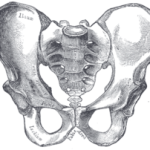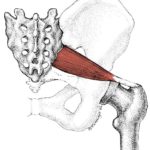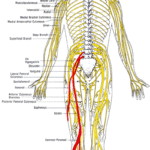The Pelvis, the Piriformis Muscle and the Sciatic Nerve.
Following up on a recent post about sciatic pain we will look more closely at the position of the pelvis and its relation to the piriformis muscle and the sciatic nerve.
The essence of my message is to stop tucking the pelvis. Everyone tucks their pelvis under and lives with the thigh bones forward of the perpendicular line that they should follow to the ground.
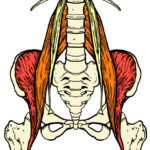 Let’s look at what a tucked pelvis does to the piriformis and the sciatic nerve.
Let’s look at what a tucked pelvis does to the piriformis and the sciatic nerve.
The psoas muscle and the piriformis muscle are the only two muscles connecting the legs to the spine and for our upright posture to be truly successful these two muscles need to live in perfect alignment and in perfect balance.
But success in the human body is relative because the very nature of being one-side dominant makes perfect posture an oxymoron.
The piriformis muscle connects from the outer leg to the front of the sacrum, the triangular-shaped bone between the two hip bones.
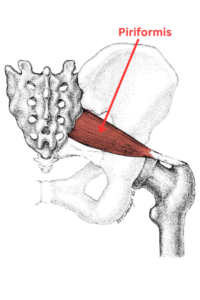
When the piriformis is in its correct relaxed position it is in an almost parallel line between the sacrum and outer leg.
Un-tucking the pelvis moves the top of the sacrum in a little and the bottom of the pelvis moves back hopefully taking the legs back as well.
The inner thighs roll gently in and back and the outer thighs move gently towards the front.
This is the ideal design and allows the piriformis to live correctly between the two bones that it connects to.
If the pelvis tucks under the sit bones draw closer to the hamstrings and the thigh bones sink forward.
The inner thighs roll open and the outer thighs roll back.
This is the exact opposite of the ideal design but it is what most people are doing.
These actions shorten the piriformis muscle from it natural position. Instead of broadening at the back, the outer leg and sacrum are kind of crunched in towards one another.
And the piriformis collapses out of its ideal resting length to shorten. If you live with the pelvis tucked as your default position the piriformis becomes chronically short which has far-reaching effects.
When the pelvis is in the correct position the piriformis will be in its correct position.
If the pelvis is in the correct position the leg bones are directly under the hip bones and the spine can sit directly on top of the pelvis.
When the piriformis muscle is in the correct position the sciatic nerve is free to flow. These are big ifs.
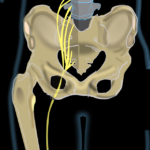
The sciatic nerve comes through the pelvis as a series of nerves that gather and connect directly behind the piriformis.
If the pelvis is un-tucked the piriformis muscle is broad and there is space for the sciatic nerve to flow through on its way to the leg.
If the pelvis is tucked under everything in the buttock region gets compressed and the piriformis muscle and the sciatic nerve begin to push up against one another creating a recipe for pain.

